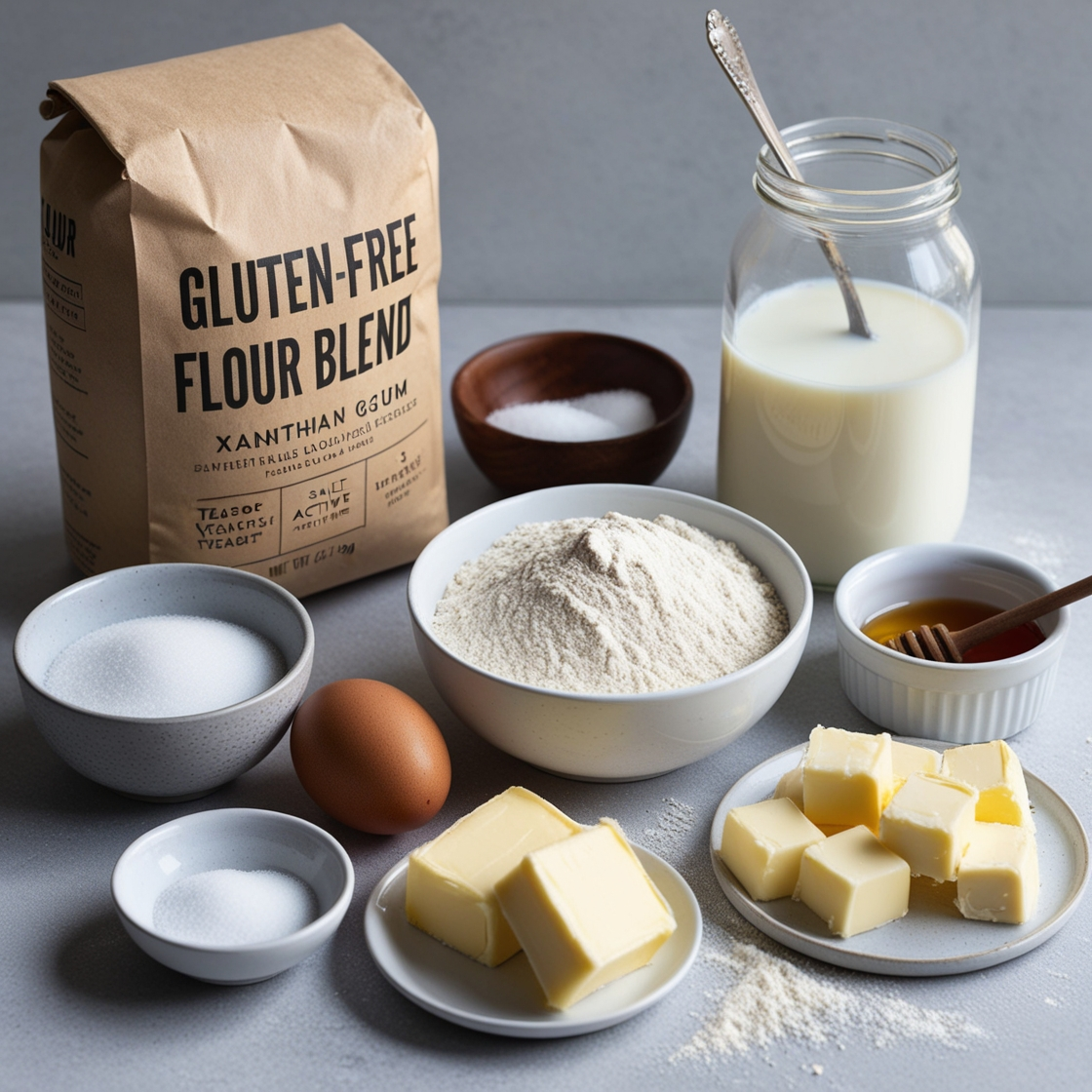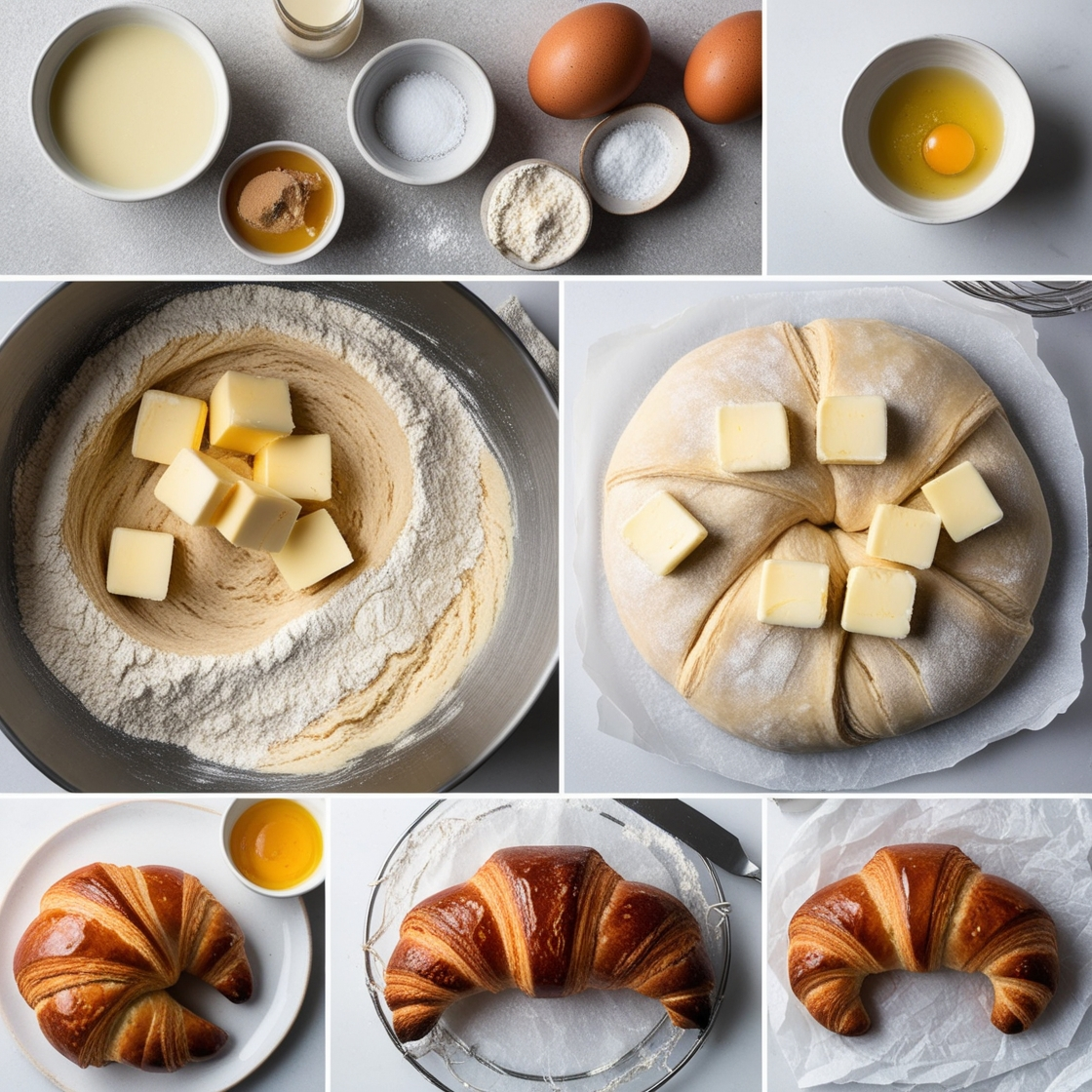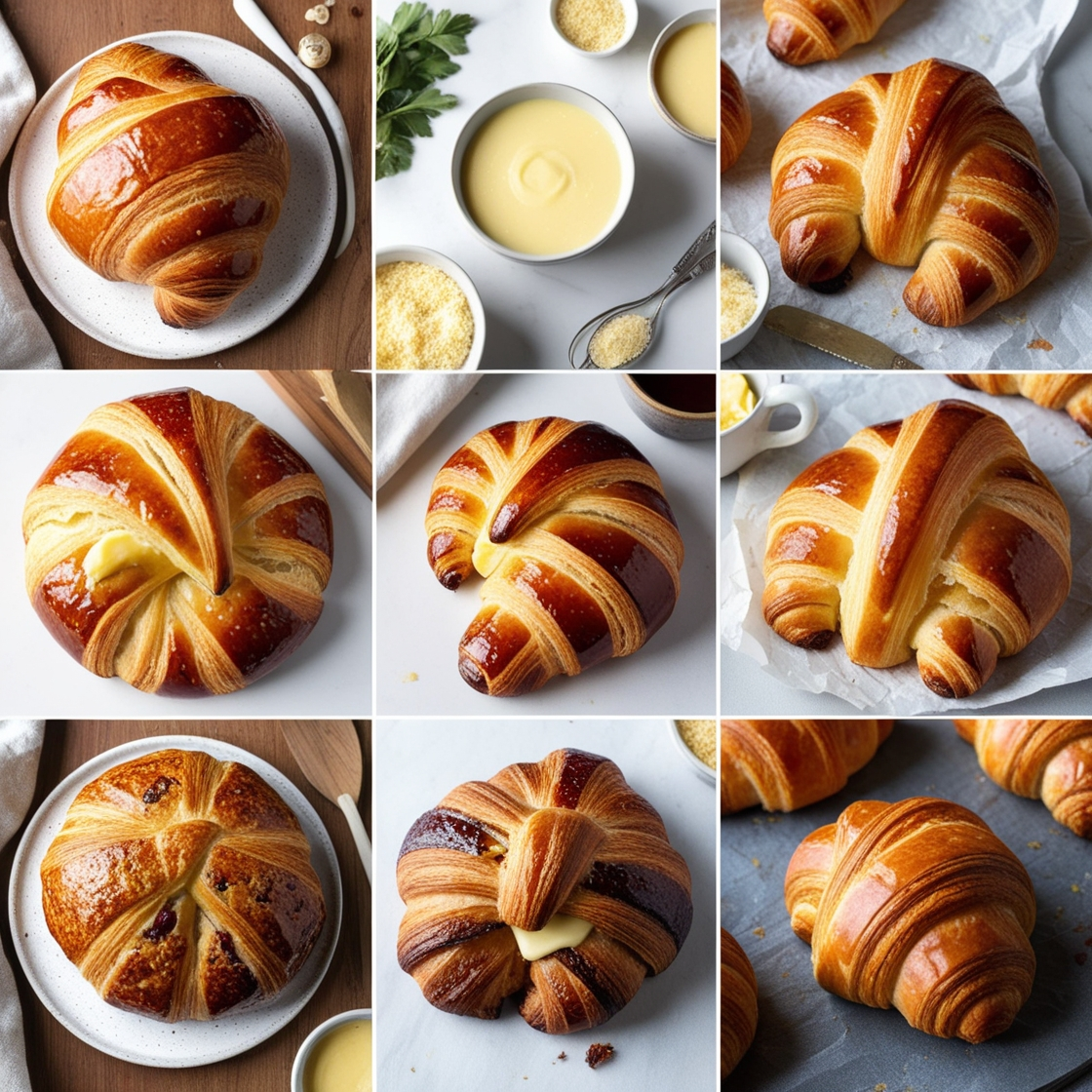Overview of Nutritional Value

Gluten-free croissants can be a delightful treat for those with gluten sensitivities or celiac disease, without compromising on taste and texture. These croissants offer a rich source of carbohydrates, essential for energy, while also providing moderate amounts of protein and fat. Depending on the ingredients used, they can also offer vitamins and minerals such as vitamin B, iron, and calcium.
Ingredients

– Gluten-free flour blend: 3 cups
– Xanthan gum: 1 teaspoon (if not already included in your gluten-free flour blend)
– Sugar: 1/4 cup
– Salt: 1 teaspoon
– Active dry yeast: 1 packet (2 1/4 teaspoons)
– Warm milk: 1 cup
– Butter: 1 cup (cold, cut into small cubes)
– Eggs: 2 (room temperature)
– Water: 1/4 cup (warm)
– Honey: 1 tablespoon
Method

1. Activate the yeast: In a small bowl, combine warm water, a pinch of sugar, and the active dry yeast. Let it sit for about 5-10 minutes until frothy.
2. Prepare the dough: In a large mixing bowl, combine the gluten-free flour, xanthan gum (if needed), sugar, and salt. Add the activated yeast mixture, warm milk, eggs, and honey. Mix until a dough forms.
3. Incorporate the butter: On a lightly floured surface, roll out the dough into a rectangle. Distribute the cold butter cubes evenly over the dough. Fold the dough over the butter, then roll it out again. Repeat this process several times to create layers.
4. Chill the dough: Wrap the dough in plastic wrap and refrigerate for at least 2 hours, or overnight if possible. This helps the butter to firm up and the dough to develop its flaky layers.
5. Shape the croissants: After chilling, roll out the dough into a large rectangle and cut it into triangles. Roll each triangle from the wide end to the tip, forming a crescent shape.
6. Proof the croissants: Place the shaped croissants on a baking sheet lined with parchment paper. Cover with a clean kitchen towel and let them rise in a warm place for about 1-2 hours, or until doubled in size.
7. Bake: Preheat the oven to 375°F (190°C). Brush the croissants with an egg wash (1 egg beaten with a tablespoon of water) for a shiny finish. Bake for 15-20 minutes, or until golden brown and flaky.
8. Cool and enjoy: Let the croissants cool slightly before serving. Enjoy them warm for the best texture and flavor.
Key Features

– Gluten-free: Safe for those with gluten intolerances or celiac disease.
– Flaky and buttery: Achieves a texture similar to traditional croissants.
– Homemade: Allows for control over ingredients and customization.
– Versatile: Can be enjoyed plain or filled with various sweet or savory fillings.
Creative Service Ideas
– Gluten-Free Baking Classes: Offer workshops teaching how to make gluten-free croissants and other pastries.
– Custom Gluten-Free Pastries: Provide a service for personalized gluten-free pastries for events and celebrations.
– Subscription Boxes: Create a monthly subscription service delivering different gluten-free baked goods, including croissants, to customers.
Frequently Asked Questions

1. Can I use a different gluten-free flour?
– Yes, but ensure it is a blend suitable for baking and contains xanthan gum or add it separately.
2. How long can I store gluten-free croissants?
– Store in an airtight container for up to 2 days at room temperature or freeze for up to 3 months.
3. Can I make the dough ahead of time?
– Yes, the dough can be made and refrigerated overnight, or frozen for up to a month. Thaw in the refrigerator before using.
4. What fillings work well with gluten-free croissants?
– Sweet fillings like chocolate, almond paste, or fruit preserves, and savory fillings like ham and cheese or spinach and feta.
Thank you for trying out this gluten-free croissant recipe. We hope it brings you as much joy and satisfaction as it does for us. Happy baking
